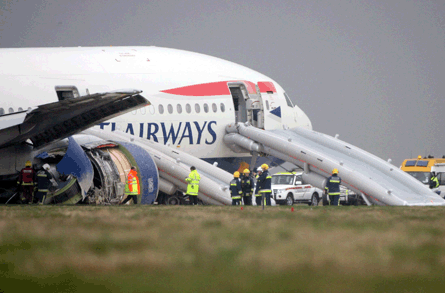European safety regulators are extending fuel-icing prevention modifications to Airbus A330/A340s powered by Rolls-Royce Trent engines. Meanwhile, Boeing is preparing to ship a Trent 800 thrust reverser fix for R-R-powered 777s.
The European Aviation Safety Agency has issued an airworthiness directive ordering replacement of fuel-oil heat exchangers in Trent 500 and 700 powerplants within 6,000 flight hours from 10 July 2009, or before 1 January 2011, whichever falls first.
Trent 800 engines for the Boeing 777 are already the subject of a similar directive, the result of investigations into the last year's British Airways 777 accident at London Heathrow.
But an incident at Manchester in May, involving an Etihad A330, led Airbus to suggest that Trent engines on the A330 and A340-500/600 might also need precautionary modification.
 |
|---|
© Stephen Butler/Rex Features |
EASA's new directive states: "The incident has indicated the potential susceptibility to ice blockage for Airbus aircraft in combination with [Rolls-Royce] engines that feature similar fuel systems to the Trent 800."
Meanwhile, Boeing will begin deliveries of its reverser modification kits before year-end. This action follows a 25 November service bulletin that the airframer issued to operators of 225 Trent 800-powered 777s.
Issues with the thrust reverser - built by Spirit AeroSystems - centre on possible heat damage and the associated deterioration of the device's inner composite wall.
Boeing says in-service reports show that even if the damage does occur, the composite panels break into pieces small enough so that the debris does not "pose a threat to the airplane".
The thrust reverser fix includes "more robust thermal blankets, cooling features and improved seals", says the airframer.
As an interim measure, Boeing has recommended that operators perform repetitive inspections of the inner wall of the thrust reverser for potential heat damage.
If damage is found, the affected parts must be replaced before further flight, the company says.
Boeing says in-service experience and testing have validated that a heat-damaged thrust reverser will continue to provide its deceleration function for landings.
Source: Flight International























